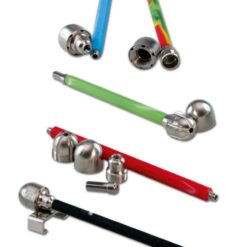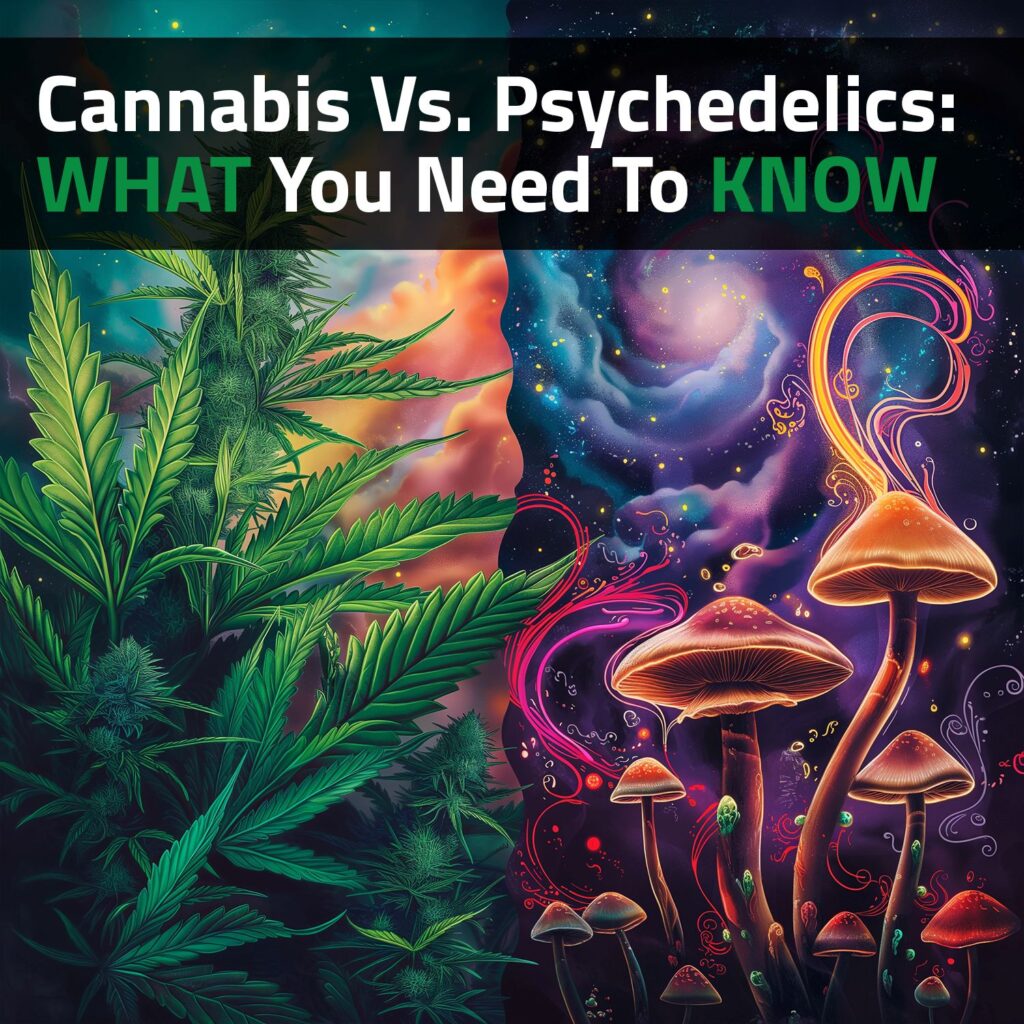The world of natural substances offers a range of options for altering consciousness, managing stress, and exploring the mind. Among these, cannabis and psychedelics often turn up in conversations, whether about therapeutic potential, recreational use, or spiritual exploration. While both have gained traction for their unique effects, they differ significantly in how they interact with the body and mind.
This article dives into the differences between cannabis and psychedelics, their uses, and how to decide what might be right for you.
Cannabis: A Versatile Plant With Broad Appeal
Cannabis contains cannabinoids, such as THC (tetrahydrocannabinol) and CBD (cannabidiol), which interact with the endocannabinoid system in the body. This system regulates mood, pain, appetite, and more. THC is responsible for the plant’s psychoactive effects, while CBD is non-intoxicating and often used for therapeutic purposes.
Common Effects
- Euphoria: A mild high characterised by relaxation, happiness, and an uplifted mood.
- Increased sensory perception: Colours may seem brighter, music more enjoyable, and food more flavourful.
- Boosts calmness and focus: For some, cannabis enhances creativity and focus, making it a popular choice for tasks that require a different perspective.
Therapeutic Uses
- Pain management: Chronic pain conditions, arthritis, and migraines may be relieved when consuming cannabis products.
- Mental health support: Individuals with anxiety, depression, and PTSD may benefit from cannabis use.
- Relieve symptoms of sleep disorders: Boosting calmness and aiding sleep is a characteristic of many cannabis strains, making cannabis a good aid for insomnia and other sleep-related issues.
- Appetite stimulation and nausea relief: Cannabis has the ability to boost appetite and relieve nausea, which makes it suitable for individuals undergoing chemotherapy or dealing with appetite loss.
Psychedelics: A Gateway To Inner Exploration
Psychedelics such as LSD, psilocybin (found in magic mushrooms), and DMT work primarily by affecting serotonin receptors in the brain. These substances often induce profound changes in perception, thought patterns, and emotions.
Common Effects
- Altered perception: Visual distortions, enhanced colors, or intricate patterns may appear.
- Ego dissolution: A feeling of interconnectedness and loss of the self, often described as a spiritual awakening.
- Emotional intensity: Emotions can become heightened, leading to breakthroughs or deeply personal insights.
Therapeutic Uses
Recent studies have shown promise for psychedelics in:
- Mental health treatment: Alleviating symptoms of depression, anxiety, and PTSD.
- Addiction recovery: Addressing alcohol and nicotine dependence.
- End-of-life care: Reducing existential distress in terminally ill patients.
Potential Risks
Psychedelics can be powerful and unpredictable:
- Bad trips can result in intense fear or distress.
- Those with underlying mental health conditions may be at higher risk for adverse effects.
- Improper use in unsafe settings can lead to accidents or trauma.
Key Differences Between Cannabis And Psychedelics
There are various differences between a cannabis experience and a psychedelic experience, making each form suitable to different user preferences.
Duration Of Effects
- Cannabis: The effects of smoking or vaping cannabis typically last 1–3 hours, while cannabis edibles can last up to 8 hours.
- Psychedelics: Trips can range from 4–12 hours, depending on the substance. For example, psilocybin mushrooms usually last 4–6 hours, while LSD can last 8–12 hours.
Intensity
- Cannabis: Often produces a mild to moderate high, suitable for social or casual use.
- Psychedelics: Can lead to profound, mind-altering experiences that require preparation and a safe environment.
Mechanism Of Action
- Cannabis: Primarily affects the endocannabinoid system to produce physical and mental effects.
- Psychedelics: Alter serotonin activity, leading to changes in perception and consciousness.
Use Cases
- Cannabis: Frequently used for relaxation, stress relief, and medical purposes.
- Psychedelics: More often used for self-exploration, spiritual growth, or intensive therapy sessions.
Cannabis And Psychedelics: Cultural And Historical Perspectives
Understanding the cultural and historical context of cannabis and psychedelics can provide deeper insight into their uses and significance.
Cannabis In Culture
Cannabis has been a part of human history for thousands of years, with its first recorded use dating back to ancient China and India. It was used in religious ceremonies, traditional medicine, and even as a material for textiles and paper. In modern times, cannabis has transitioned from a counterculture icon in the 1960s to a widely accepted medicinal and recreational substance in many parts of the world. Today, its cultural significance continues to evolve as legalisation expands and more people turn to cannabis for relaxation, creativity, and health benefits.
Recommended products
Psychedelics Through Time
Psychedelics have similarly deep roots in human culture. Indigenous communities in the Americas used substances like psilocybin mushrooms and peyote in spiritual ceremonies long before modern science began to explore their effects. These rituals often focused on healing, community bonding, and connecting with the divine. The 20th century saw a surge of interest in psychedelics, fueled by the counterculture movement and groundbreaking research into their potential for treating mental health conditions. Despite periods of prohibition, the recent “psychedelic renaissance” is bringing these substances back into the spotlight for their therapeutic promise.
How To Choose Between Cannabis And Psychedelics
If you are considering using cannabis or psychedelics, you should consider both your goals and your experience level.
- Your goals
- If you are looking for relaxation, pain relief, or mild mental stimulation, cannabis is likely a better fit.
- If you are seeking profound personal insight, spiritual exploration, or help with deeply rooted emotional issues, psychedelics might be more appropriate under guidance.
- Experience level
- Cannabis is generally easier to navigate for beginners and has a lower likelihood of causing overwhelming effects.
- Psychedelics require a more intentional approach and are best suited for those prepared to handle intense experiences.
The Therapeutic Future Of Cannabis And Psychedelics
Both cannabis and psychedelics are gaining attention for their therapeutic potential. Cannabis is already widely accepted in medical contexts, with ongoing research supporting its use for pain, anxiety, and other conditions.
Psychedelics are following a similar trajectory, with promising clinical trials and growing acceptance in the mental health community. Organisations like MAPS (Multidisciplinary Association for Psychedelic Studies) are working to bring these substances into mainstream therapy, potentially revolutionising treatments for conditions like PTSD and depression.
Cannabis and psychedelics each offer unique paths to enhancing well-being and exploring consciousness. While cannabis provides a gentler, more accessible experience, psychedelics can open the door to profound personal growth and healing when used responsibly.
The choice between the two depends on your goals, experience level, and comfort with altered states of mind. As with any substance, education and responsible use are key to unlocking their potential benefits while minimising risks. Whether you are unwinding with cannabis or embarking on a psychedelic journey, the most important thing is to approach the experience with intention, preparation, and respect.










